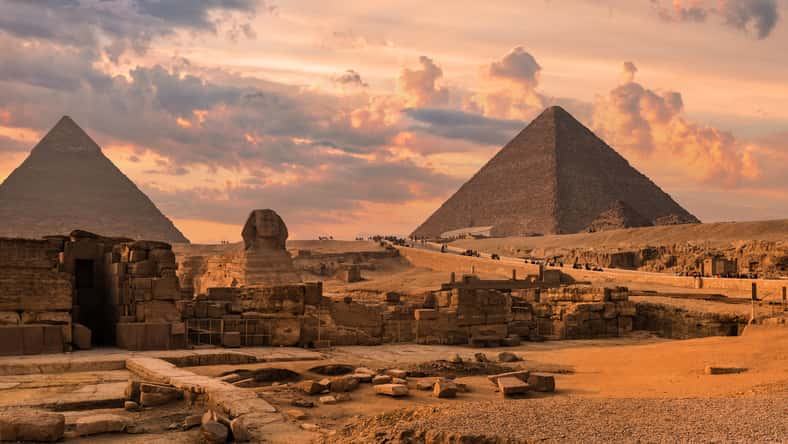The Remains Of A 3,400-Year-Old Ancient Egyptian Village Likely Built By King Tut’s Dad Have Been Found

The remains of a 3,400-year-old village in Egypt dating to the New Kingdom have been uncovered. The village may have been built by King Tutankhamun’s father and later expanded by Ramesses II.
The settlement is located at the site of Kom el-Nugus in northern Egypt, about 27 miles west of Alexandria. It sits on a rock shelf between the Mediterranean Sea and Lake Mariout. It was first excavated in 2013.
In the past, experts thought human occupation at the site was not until later times, when the Greeks established their own settlement and necropolis around 332 B.C. during Egypt’s Hellenistic period. While researchers were examining the Greek settlement, they found the older Egyptian one.
The surprising discovery of mud brick dating to the New Kingdom (1550 to 1070 B.C.) revealed the earliest known Egyptian settlement to the north of Lake Mariout.
It is unclear exactly how large the town was, but the quality of the remains and their organization around a street suggests that it was of a considerable size. The street was sloped in a way to drain surface water and protect mud brick structures from water erosion.
“There was a temple, built by King Ramses II, as well as private funerary chapels, which mention military personnel,” said Sylvain Dhennin, a study author and an archaeologist with the French National Center for Scientific Research (CNRS).
“If the settlement was indeed military in nature, it’s possible that there was also a fortified wall and administrative buildings.”
On part of an amphora jar—a vessel with a skinny neck, oval body, and two handles—there was a stamp with the name of Merytaton, who was the daughter of the pharaoh Akhenaten (1349 to 1336 B.C.) and his wife Nefertiti.
During his reign, Akhenaten started a religious revolution to try to get Egypt to worship Aten, the sun god. Later, his son, King Tutankhamun (1336 to 1327 B.C.), who became pharaoh around eight or nine years of age, brought back Egypt’s traditional polytheistic religion.

Sign up for Chip Chick’s newsletter and get stories like this delivered to your inbox.
There may have been a wine production facility dedicated to Merytaton on the site, demonstrating that celebrity endorsements existed even in ancient times.
“The presence of this stamp probably indicates the production of wine belonging to a royal estate,” said Dhennin. “The vineyards on the margins of Egypt were probably protected by the military and formed part of a pioneering front to occupy this region toward the desert.”
At the site, excavations are ongoing. They may help expose how large the settlement once was and when exactly it was founded. Further work is needed to shed light on the New Kingdom’s history on the Mediterranean coast.
The details of the new findings were published in the journal Antiquity.
More About:News





